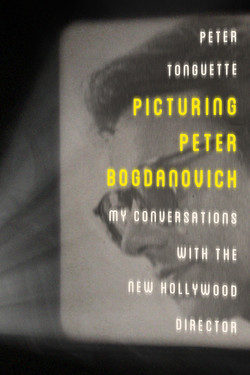Читать книгу Picturing Peter Bogdanovich - Peter Tonguette - Страница 6
На сайте Литреса книга снята с продажи.
ОглавлениеPrologue
“I Hadn’t Realized It Was So Late in Ohio”
It may come as a surprise to those who know him for his great films, among them The Last Picture Show, What’s Up, Doc?, and Paper Moon, but from 1991 to 1998 Peter Bogdanovich edited a calendar. It was not just any old calendar, either, but a revival of an ancient calendar, published to compete with the modern calendar that all of us Westerners unquestioningly make use of.
A little background might be helpful: as Robert Graves describes in book The White Goddess—his classic “historical grammar of poetic myth”—years were once divvied up differently than they are today. The months were shorter and more numerous. “This agricultural tree-calendar based on nature’s cycles, and consisting of thirteen 28-day months and one extra day,” Bogdanovich explained, “gave birth to the ancient phrase ‘a year and a day.’”1 The months were also called by other names—the names of trees, in fact. So, for example, instead of March, June, and December, there were Alder, Oak, and Elder.
For a whole host of personal and professional reasons, Bogdanovich cottoned to this calendar, and when he brought out his own version of it (originally titled A Year and a Day Engagement Calendar, later retitled The White Goddess Engagement Diary), he included a handy chart to aid in the conversion of any Gregorian date into a tree date.
Once when we were chatting, I mentioned to Bogdanovich that I had ascertained what my birthday would have been according to the old calendar.
“My birthday is March 27,” I told him. “That equals Alder 10.”
“Alder 10,” he said, pausing thoughtfully. “That’s good. That’s the tree of foundations—and you’re working on the foundation of me at the moment.”
We laughed because we knew how true it was: I was, after all, writing a book about his films and had done plenty of thinking about the man who made them.
But in March 2014, busy with the completion of his newest film, She’s Funny That Way, Peter Bogdanovich seemed to have forgotten my birthday and—momentarily, at least—that Ohio (where I lived) was several hours ahead of California (where he was then spending his time).
He was in Los Angeles, having dinner with his ex-wife and closest friend, Louise Stratten, whose sister, the late Dorothy Stratten, was the love of his life. Louise cowrote and coproduced She’s Funny That Way.
It was about nine o’clock in the evening on the West Coast but just past midnight in Ohio. In my neck of the woods, the calendar had flipped to March 27—or Alder 10—when the phone rang. Absorbed in CNN’s coverage of Malaysia Airlines Flight 370 (remember the wall-to-wall cable coverage that episode inspired?), I couldn’t get to the phone from the sofa in time to pick up. The answering machine clicked on, and a short message followed: “Peter Bogdanovich calling Peter Tonguette. Hopefully you get this, Peter. Thanks.”
I called back a few minutes later, and when I reached him, he was apologetic.
“I hadn’t realized it was so late in Ohio,” he said.
I told him that was okay. Then I asked what occasioned the call.
Rather jarringly turning my attention from the rat-a-tat-tat voice of CNN’s Richard Quest to that of my favorite filmmaker, he told me he was curious for my opinion about a scene or two in She’s Funny That Way. In the background, I could hear the rattle of plates and glasses; the murmur of orders being given.
“Sorry, Peter,” he interjected, stating the obvious, “we’re in a restaurant.”
It would be a chicken breast and a piece of toasted rye bread for the Oscar-nominated director.
We didn’t chat for long after that, but he said he was glad to hear a friendly voice and that we would talk again soon.
Well, this was a fine way to start my birthday. Not that he remembered it was my birthday—or, that evening, what time zone Ohio was in. There was no great meaning behind the call. Louise later told me it was her idea: Peter was just looking for someone to talk to who knew and admired his films—and, as he said, a friendly voice—and they happened to have my phone number.
Still. How, really, does it happen that Peter Bogdanovich—Peter Bogdanovich!—rings up a young journalist in the Midwest in the middle of the night?
Recalling his initial encounter with Alfred Hitchcock—one that ultimately led to a book not unlike this one, the famous Hitchcock—François Truffaut wrote: “It all began when we broke the ice.”2
For Peter Bogdanovich and me, it all began with another phone call, about seventeen years ago ….
